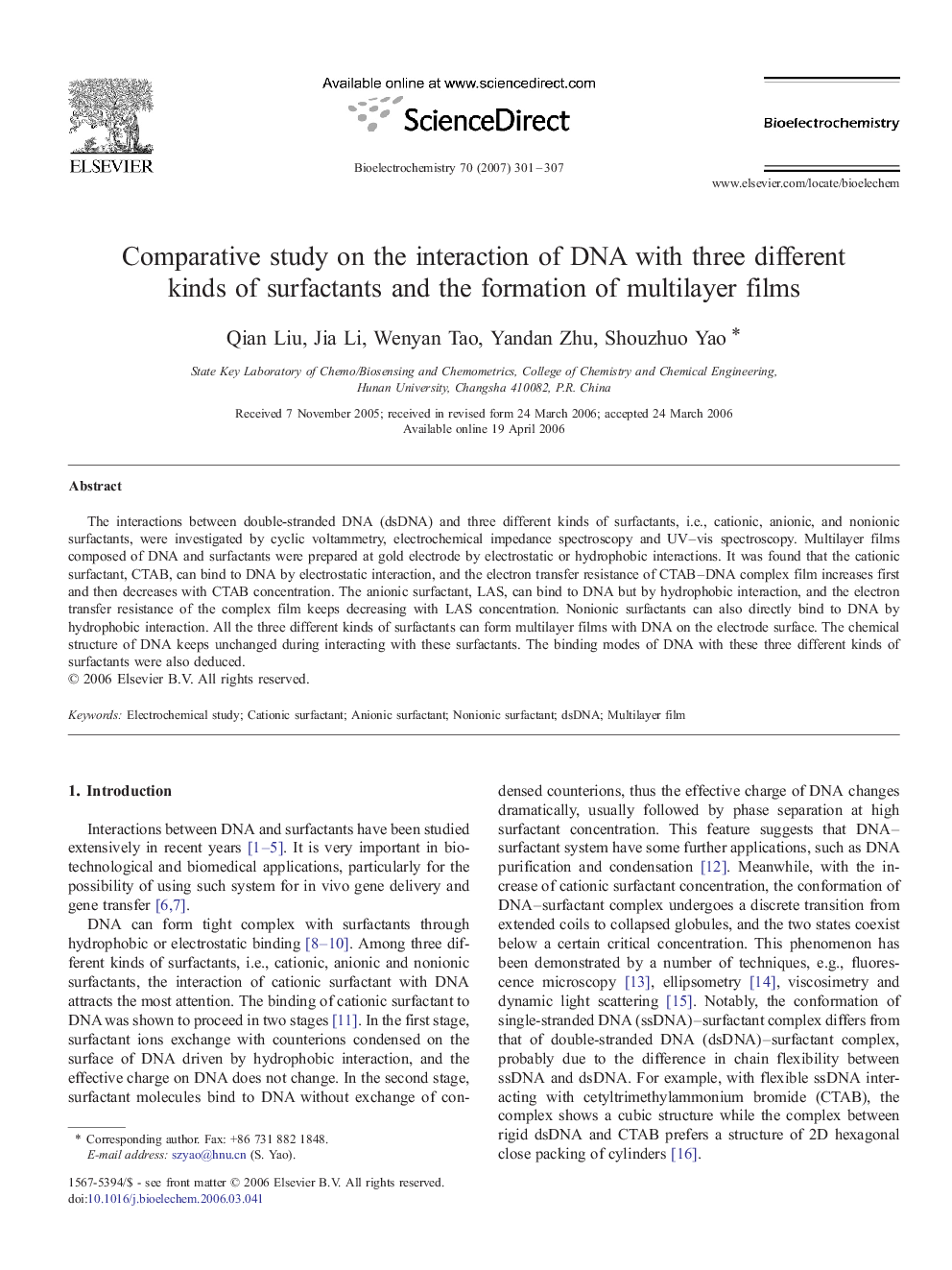| Article ID | Journal | Published Year | Pages | File Type |
|---|---|---|---|---|
| 1272486 | Bioelectrochemistry | 2007 | 7 Pages |
The interactions between double-stranded DNA (dsDNA) and three different kinds of surfactants, i.e., cationic, anionic, and nonionic surfactants, were investigated by cyclic voltammetry, electrochemical impedance spectroscopy and UV–vis spectroscopy. Multilayer films composed of DNA and surfactants were prepared at gold electrode by electrostatic or hydrophobic interactions. It was found that the cationic surfactant, CTAB, can bind to DNA by electrostatic interaction, and the electron transfer resistance of CTAB–DNA complex film increases first and then decreases with CTAB concentration. The anionic surfactant, LAS, can bind to DNA but by hydrophobic interaction, and the electron transfer resistance of the complex film keeps decreasing with LAS concentration. Nonionic surfactants can also directly bind to DNA by hydrophobic interaction. All the three different kinds of surfactants can form multilayer films with DNA on the electrode surface. The chemical structure of DNA keeps unchanged during interacting with these surfactants. The binding modes of DNA with these three different kinds of surfactants were also deduced.
